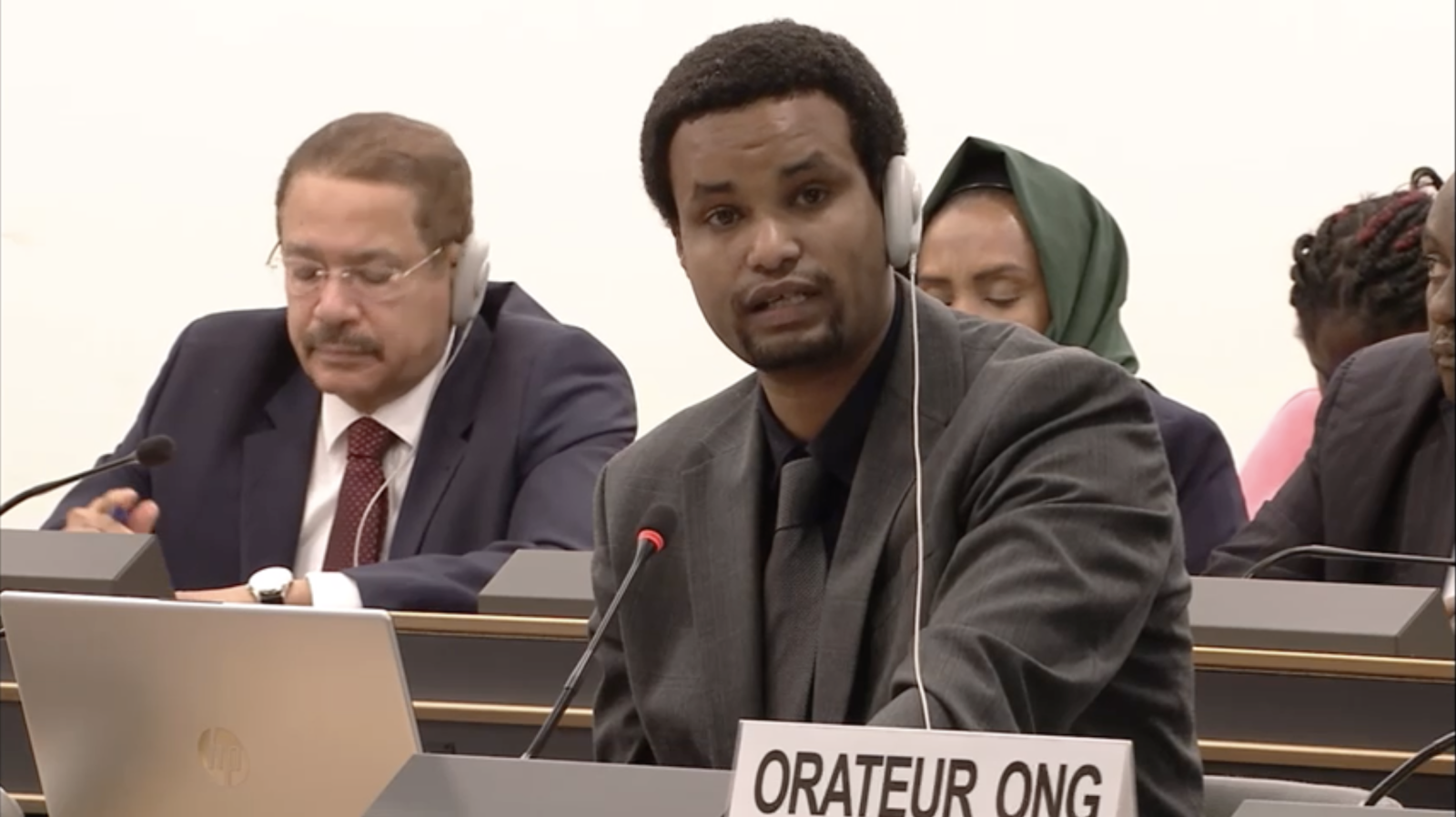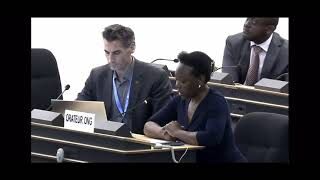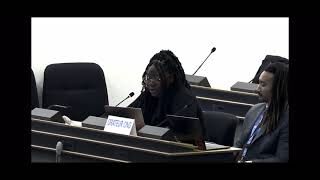30 July: World Day Against Trafficking in Persons
By Arwa Akbar / GICJ
“At the end, I confessed, just to make it stop.” - Aidana, an 18-year-old victim of human trafficking.
What is World Day Against Trafficking in Persons and why is it important?
The World Day Against Trafficking in Persons, celebrated on 30 July each year, aims to raise awareness of the issue of global human trafficking and highlight the human rights violations faced by its victims. World Day Against Trafficking in Persons was established in 2013, after the United Nations General Assembly’s adoption of Resolution A/RES/68/192 on December 18th that sought to optimise international collaborative initiatives against human trafficking. The Resolution recognises human trafficking as being ‘a serious threat to human dignity and physical integrity, human rights and development’[1], with human traffickers degrading victims by coercing them into forced labour and exploiting them for sex [2]. Victims are typically women and children who account for approximately one half and one third of all victims, respectively [3].
The UN estimates a detected 200,000 victims of human trafficking globally between 2020 to 2023, but estimates the actual figure to be exponentially greater considering the sheer amount of undocumented cases [4].
What is this year’s theme?
This year’s World Day Against Trafficking in Person theme focuses its lens on magnifying the role of criminal justice systems and law enforcement in effectively targeting and disassembling ‘organised trafficking networks while ensuring a victim-centred approach’ [5]. The UN recognises human trafficking as organised crime, hence, it must be dealt with as such. The new digital-age has catalysed the rapid development of global interconnectedness with international flows and networks of supply, demand and migration that boost global economies and aim to improve the standard of living. Despite being beneficial to the global community overall, in the background are traffickers hidden in the shadows of human improvement as they take advantage of these outlets to track and trap victims.
The UN offers insights into this, citing the use of online scams by traffickers to trick victims into the detrimental chain of human trafficking [6]. The UN further reiterates its justice-oriented approach through its suggestions to local security forces, which include urges to analyse online channels that can be easily manipulated by traffickers and to routinely conduct investigations. The aim is for local enforcement to already act on high-alert, as to quench the advent of large-scale cross-nation trafficking by instigating the point of inception. Such an approach would have saved 18-year old Aidana, when she was a victim of human trafficking as part of her friend’s involvement in organised crime.
Case study: Aidana’s story
Aidana has lived independently since she was 8-years-old where she resided in an orphanage until she was forced out at 15 by law. Having lacked the warmth of a supportive and stable family home, her step-father being alcoholic, Aidana was left to fend for herself and took on the role of a seamstress. Unlike most children you may know, Aidana did not have a loving mother or role model to turn to in times of difficulty. Her vulnerability became evident when her alleged friend Madina tasked her with delivering an ordinary package to a third party. It was only after a police officer stopped her and searched the package that Aidana had discovered that her kindness had been exploited, the seemingly innocent package contained drugs and Aidana was accused in a high-pressure interrogation.
“At the end, I confessed, just to make it stop.” [7] Aidana reveals that she faced 7 months in detention for her friend’s deception after being used as a pawn in Madina’s elaborate human trafficking scheme to make money from drugs. Aidana’s case is devastating but not unique; as such, this emphasises how measures must be taken for prevention and abrogation of human trafficking.
What is the UN doing to prevent human trafficking?
Aidana’s story was released by the United Nations Office on Drugs and Crime (UNODC) to spread awareness of trafficking and underscore one of their chief initiatives, a partnership with the organisation Oasis who are helping victims of human trafficking like Aidana get their lives back on track. UNODC and Oasis aim to foster stable social dynamics between local security forces and civil society to work towards fighting the threat of human trafficking together.
Additionally, the UN emphasises the significance of the Inter-Agency Coordination Group, a UN-forum facilitating inter-organisation efforts, to successfully implement the Global Plan of Action to Combat Trafficking in Person or Resolution A/RES/64/293. The Global Plan aims to advocate for the universal ratification, among Members states, of the United Nations Convention against Transnational Organized Crime [8], highlighting to a greater extent how organised crime and human trafficking are intertwined, leading to the focus on law enforcement and security systems of this year’s international day. The resolution further urges cooperation between nations, spreading awareness of human trafficking and factors which render people vulnerable to being trafficked, which include lack of access to education and living in a state of poverty. The Plan also strives to protect the human rights of victims, and to uphold the Protocol to Prevent, Suppress and Punish Trafficking in Persons, Especially Women and Children.
Another notable partnership, accentuating the message that human trafficking is an issue that requires the collaborative efforts of the international community, is the initiative between the UN Human Rights Office and the International Civil Aviation Organization (ICAO) [9]. The two entities have developed an e-learning course to help airline staff recognise signs of human trafficking victims who may be on-board to offer their support and assistance out of a terrifying situation.
GICJ’s stance
Geneva International Centre for Justice (GICJ) condemns all forms of human trafficking and is committed to aiding the UN in its effort to fight the issue by spreading awareness of the matter and commemorating events such as the World Day Against Trafficking in Persons. GICJ stands by the UN and believes that international collaboration and local efforts are necessary to dismantle the human trafficking empire and restore the lives of the victims, as well as their agency and dignity through upholding their human rights.
GICJ recognises the importance of the international governing system in achieving its goal of championing the norms and principles of human rights globally [10], in an effort to mitigate human rights violations such as human trafficking. GICJ emphasises the need for international cooperation in tackling issues that threaten the livelihood of mankind. Degradation knows no boundaries, as such, all countries must work together to ensure the safety and livelihood of humanity.
#GenevaInternationalCentreforJustice #GICJ #30July #humantrafficking #UnitedNations #UN
Sources
[1] https://www.un.org/en/development/desa/population/migration/generalassembly/docs/globalcompact/A_RES_68_192.pdf
[2] https://www.un.org/en/observances/end-human-trafficking-day/background
[4] https://www.un.org/en/observances/end-human-trafficking-day
[5] https://www.unodc.org/unodc/en/endht/index.html
[6] https://www.unodc.org/unodc/en/endht/index.html
[9] https://www.ohchr.org/en/trafficking-in-persons/what-we-do-end-human-trafficking







